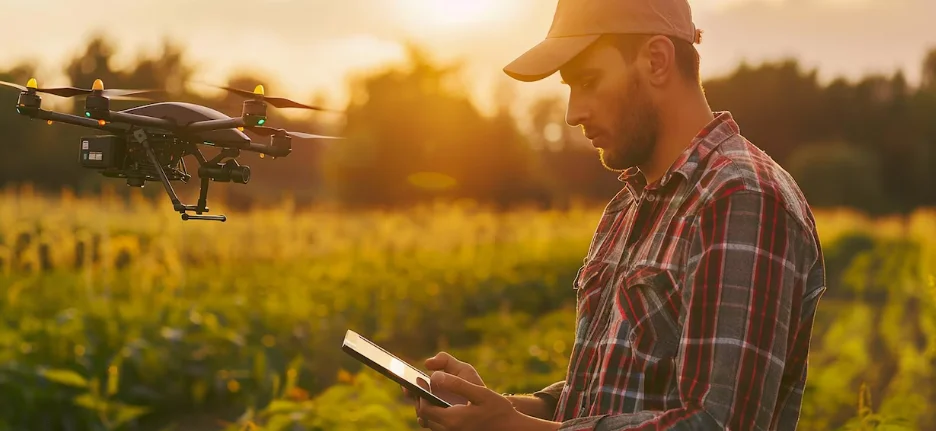Farming has always evolved with new tools, from hand plows to tractors to GPS-guided harvesters. Now, the rise of agritech drones is pushing that evolution further, giving farmers a smarter, faster, and more precise way to manage their land.
These drones are not just flying cameras. They are data-gathering machines and precise spraying tools that make smart farming more accurate and resource-efficient. As access to drone technology improves, even mid-sized farms can begin seeing the benefits.
The Role of Agritech Drones in Modern Agriculture
Agritech drones help tackle long-standing challenges like uneven crop growth, inefficient spraying, and labor shortages. They work as eyes in the sky, tools on wings, and data collectors that give farmers a real-time view of crop health.
Here are some of the key problems drones are solving on the field:
- Limited access to real-time crop data
- Uneven pesticide and fertilizer application
- Soil variability across fields
- Slow manual inspection of large areas
Instead of guessing or relying solely on traditional methods, farmers now have high-resolution images, multispectral analysis, and GPS-precise spray paths, all thanks to drone systems.
Key Applications of Drones in Smart Farming
Below are the core functions where drones are making a measurable difference, explained with more detail to highlight real-world impact.
1. Aerial Crop Monitoring and Imaging
Drones can fly over large plots and capture multispectral images that reveal crop health issues invisible to the naked eye. This includes:
- Identifying early signs of nutrient deficiency or water stress
- Spotting disease or pest spread before it becomes unmanageable
- Monitoring crop uniformity to guide replanting or treatment decisions
These insights allow farmers to act early, treating only the affected areas rather than the whole field. This precision cuts costs and saves time.
2. Targeted Spraying and Variable Rate Application
Some drones are equipped with tanks and nozzles to perform crop spraying. But the real value lies in their accuracy. They spray with GPS-guided precision and only where needed, helping reduce chemical use.
More advanced systems can apply different quantities of product across zones, based on the real-time health of crops below. This is known as variable rate application, and it is already being tested in many commercial farms worldwide.
A study from the Journal of Precision Agriculture found that UAV-based spraying significantly reduced pesticide use while maintaining yield, especially in high-value crops like vineyards and orchards.
3. Soil and Field Analysis
Drones can map out field contours and variations in soil moisture or texture. When combined with satellite data or sensor networks, this helps optimize irrigation systems and fertilizer distribution.
Instead of treating the field as one uniform block, farmers can create zoning maps and address each section’s needs individually.
4. Time and Labor Savings
In large fields, manual scouting and inspection can take days. A drone can survey the same area in under an hour. And since it can access areas difficult to reach by foot or tractor, it opens up new options for time-sensitive tasks like mid-season checks or post-storm damage assessments.
Factors to Consider Before Implementation
While the benefits are strong, successful drone adoption also depends on a few key factors:
- Training and licensing. Operators must understand both flight rules and data interpretation
- Data integration. Drones work best when paired with software platforms that process and analyze collected data
- Battery and payload limits. Spraying drones are often limited by their weight capacity and flight time
- Weather dependency. Wind and rain can limit drone performance and scheduling
Choosing the right drone system involves balancing cost, capacity, and the needs of your farm size and crop type.
Conclusion
As drone technology becomes more accessible, their role will continue expanding. Farmers will rely on them not just for monitoring but also for automated decision-making. Some platforms already combine drone imagery with AI-driven crop management systems, offering suggestions based on real-time insights.
With climate conditions becoming more unpredictable, smart farming tools like drones will be essential in helping farmers adapt. They allow growers to respond faster, waste fewer resources, and protect their crops in a more sustainable way.
Looking ahead, drones will likely be integrated more closely with other technologies like IoT sensors, automated tractors, and cloud-based analytics. This will give farmers an even more complete view of their operations, supporting better decisions and long-term resilience.
